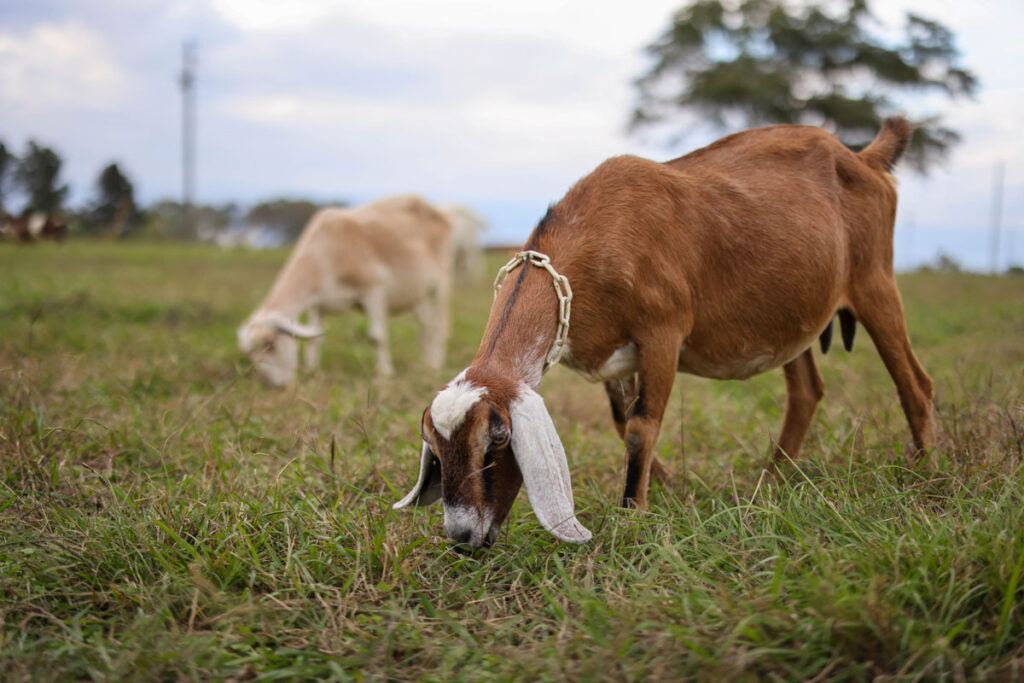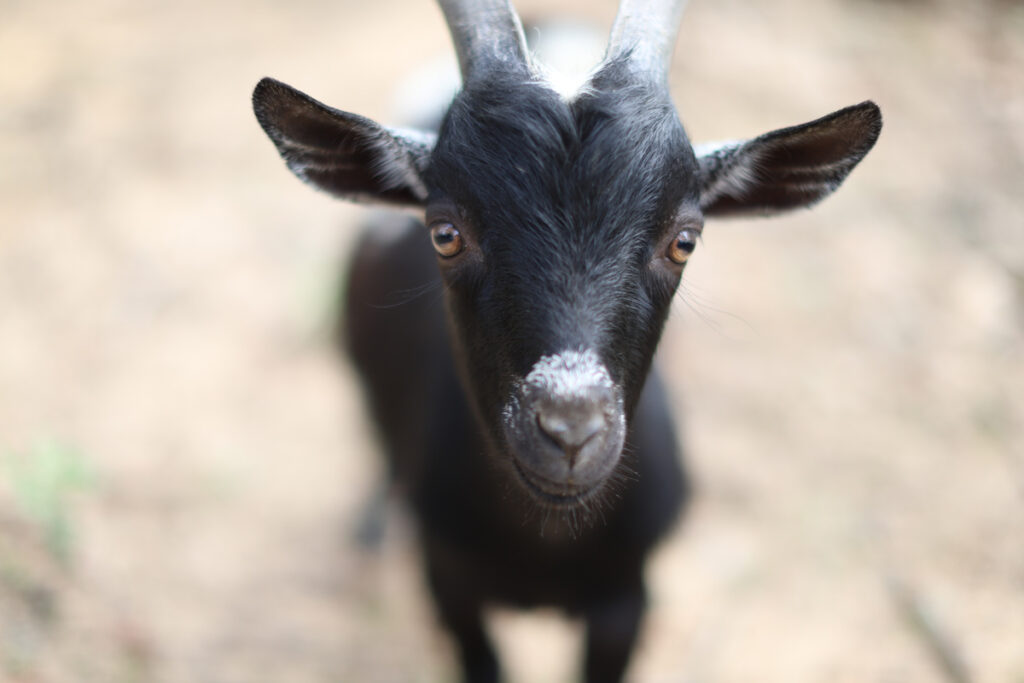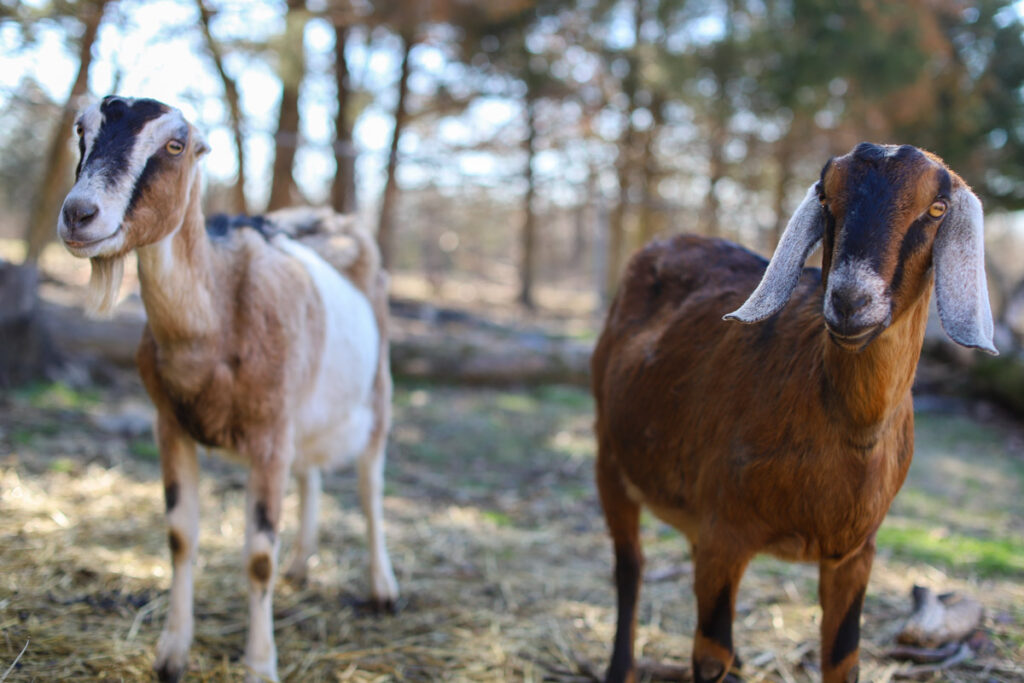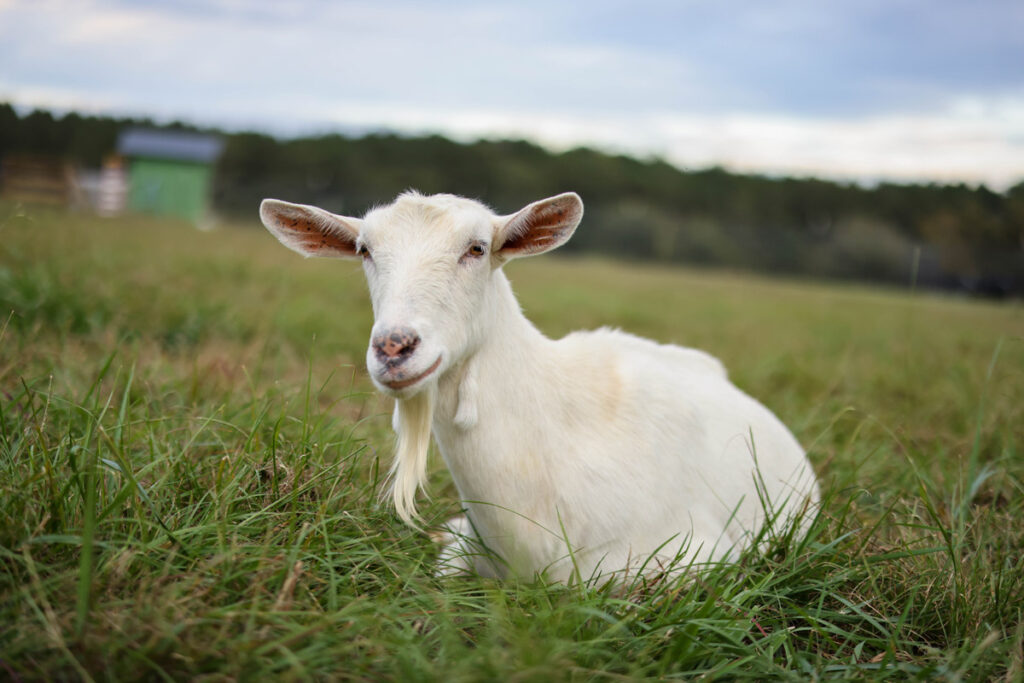Raising goats is a great way to add sustainability to your homestead with meat and dairy production. A common problem for a goat is a copper deficiency. So of course, you want to know the signs and symptoms of copper deficiency in goats and how to treat it before it becomes severe. With regular maintenance, your goat herd will be healthier and more productive.

How Much Copper Does a Goat Need
Copper is essential to goats. Goats need copper for their immune systems, fertility, and overall health. While there isn’t an established standard for copper requirements, the recommended amount of copper for adult meat goats is 40 mg for every kg of dry matter they eat.
If you live in an area deficient in natural copper, they won’t get enough copper in their feed and hay. And even if you feed goat minerals to your herd, they may still develop a deficiency.

Signs & Symptoms of Copper Deficiency in Goats
This makes it important to know how to spot copper deficiency in goats. Thankfully, there are some big red flag signs to warn you that your goat needs copper supplementation.
Watch out for these symptoms:
- Bleached or faded look to the coat
- Fishtailing
- Brittle, rough coat, and shedding
- Trouble getting rid of worms
Bleached or Faded Coat
The first symptom of copper deficiency is color variation in the coat. Specifically, the coat will start to look sun-bleached or faded on the back and around the eyes. It is especially noticeable on a black hair coat.
Fishtailing
The second sign is fishtailing. This is actually caused by balding on the end of the tail. The tail hair splits and looks like a fishtail.
Fishtailing is always caused by copper deficiency. These first two symptoms are enough evidence to know that there is a problem.
Shedding
Third, a goat may start shedding and their coat may get brittle and rough. We have not encountered this with our goats, but it is important to watch for.
Persistent Worms
Surprisingly, a heavy parasite load that you cannot get rid of is another sign of copper deficiency in goats. A healthy goat that is not mineral deficient will not support a heavy worm load. And deworming your goats often is not what you want if you are trying to head towards sustainability. A healthy herd will naturally be a parasite-resistant herd.

How to Fix Copper Deficiency
We do goat maintenance day about every 6 months. On goat maintenance day, we give them a copper bolus to correct a deficiency, we check them over, and we see if they need to be dewormed.
Note: We do use a chemical dewormer for our goats because they all came from chemically dependent herds. Transitioning off of that to herbal dewormers can be difficult. However, we do chemical dewormer only as needed by checking for symptoms instead of on a schedule.
What Are Copper Boluses
Copper boluses are little capsules with copper rods in them. They help correct copper deficiency.
When you put the bolus into the goat’s throat, it goes down into their rumen. The capsule dissolves in the rumen and the copper rods stay in the rumen for several days. X-rays have shown copper in the rumen up to 9 days after taking a copper bolus.
From there, it dissolves and enters the bloodstream. Remember that you won’t magically see all the symptoms disappear in one day. Give it a few weeks for their system to get healthy again.
We use Santa Cruz UltraCruz Goat Copper Boluses because they have the best price for good quality.
Dosage & How Much Copper Is Too Much For a Goat
For goats over 90 lbs, we use a 4-gram copper bolus. If you have a goat that is just under 90 pounds, but it has a severe deficiency, go ahead and give it the 4-gram dose. For minis, dwarfs, or young goats, I recommend a 2-gram tablet.
Copper toxicity in goats is rare. Goats with copper poisoning will have sweet-smelling urine that is copper-colored. If your goat is showing symptoms of copper deficiency and you follow the dosage, you shouldn’t have a problem with toxicity.
How to Give Copper Boluses to Goats
A copper bolus gun (also called a small balling gun) does help get the capsule into the throat so the goat can’t spit it right back out. Some people say they don’t like them, but after getting bit by a goat, I think the bolus gun is the better way to go.
It is helpful to have two people, one person to hold the goat and one to give the bolus.
- Bring your goats out one at a time.
- Place one bolus in the bolus gun.
- Put the bolus gun in the mouth, depressing the tongue. Make sure to get the bolus gun down into the throat past the point where the goat can easily regurgitate the capsule. Be careful not to hurt the goat. You can damage their trachea with the bolus gun.
- Push the plunger on the gun to place the capsule in the throat.
- Close the goat’s mouth, then turn the head up and rub their neck until they swallow.
- Watch them for a minute or two afterward to make sure that they don’t spit out the bolus.
There is a lot to learn about raising goats. I really recommend finding a local goat group to get plugged into. Simply using Google searches isn’t nearly as helpful as having relationships with real people and learning from them.
Alternatively, try calling your local extension office or 4-H club to help you find other goat owners in your area.
















